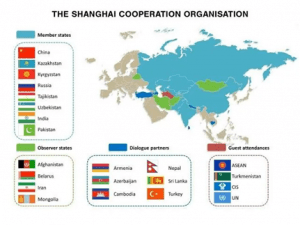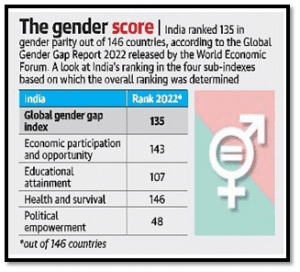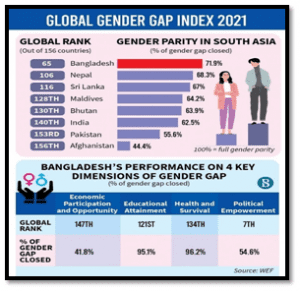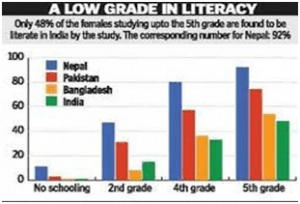DAILY CURRENT AFFAIRS (AUGUST 25, 2022)
THE POLITY AND GOVERNANCE
1. THE COMPETITION (AMENDMENT) BILL, 2022
THE CONTEXT: The Indian Competition Act was passed in 2002, but it came into effect only seven years later. The Competition Commission primarily pursues three issues of anti-competitive practices in the market: anti-competitive agreements, abuse of dominance and combinations. The long-awaited Bill to amend the Competition Act, 2002, was finally tabled in the Lok Sabha recently.
THE EXPLANATION:
• As the dynamics of the market changes rapidly due to technological advancements, artificial intelligence, and the increasing importance of factors other than price, amendments became necessary to sustain and promote market competition. Therefore, a review committee was established in 2019 which proposed several major amendments.
What is the major change in dealing with new-age market combinations?
• Any acquisition, merger or amalgamation may constitute a combination. Section 5 currently says parties indulging in merger, acquisition, or amalgamation need to notify the Commission of the combination only on the basis of ‘asset’ or ‘turnover’. The new Bill proposes to add a ‘deal value’ threshold. It will be mandatory to notify the Commission of any transaction with a deal value in excess of ₹2,000 crore and if either of the parties has ‘substantial business operations in India’. The Commission shall frame regulations to prescribe the requirements for assessing whether an enterprise has ‘substantial business operations in India’. This change will strengthen the Commission’s review mechanism, particularly in the digital and infrastructure space, a majority of which were not reported earlier, as the asset or turnover values did not meet the jurisdictional thresholds.
What is gun-jumping?
• Parties should not go ahead with a combination prior to its approval. If the combining parties close a notified transaction before the approval, or have consummated a reportable transaction without bringing it to the Commission’s knowledge, it is seen as gun-jumping. The penalty for gun-jumping was a total of 1% of the asset or turnover. This is now proposed to be 1% of the deal value.
What challenge do combining parties face in open market purchases?
• There have been several gun-jumping cases owing to the combining parties’ inability to defer the consummation of open market purchases. Many of them argue that acquisitions involving open market purchase of target shares must be completed quickly, lest the stock value and total consideration undergo a change. If parties wait for the Commission’s clearance, the transaction may become unaffordable.
• Similar to the European Union merger regulations, the present amendment Bill also proposes to exempt open market purchases and stock market transactions from the requirement to notify them to the Commission in advance. This is subject to the condition that the acquirer does not exercise voting or ownership rights until the transaction is approved and the same is notified to the Commission subsequently.
Does the amendment Bill address the issue of Hub-and-Spoke Cartels?
• A Hub-and-Spoke arrangement is a kind of cartelisation in which vertically related players act as a hub and place horizontal restrictions on suppliers or retailers (spokes). Currently, the prohibition on anti-competitive agreements only covers entities with similar trades that engage in anti-competitive practices.
• This ignores hub-and-spoke cartels operated at different levels of the vertical chain by distributors and suppliers. To combat this, the amendment broadens the scope of ‘anti-competitive agreements’ to catch entities that facilitate cartelisation even if they are not engaged in identical trade practices.
What is the amendment to the ‘settlements’ and ‘commitments’ mechanisms?
• The new amendment proposes a framework for settlements and commitments for cases relating to vertical agreements and abuse of dominance. In the case of vertical agreements and abuse of dominance, the parties may apply for a ‘commitment’ before the Director General (DG) submits the report.
• ‘Settlement’ will be considered after the report is submitted and before the Commission decides. According to the amendment, the Commission’s decision regarding commitment or settlement will not be appealable after hearing all stakeholders in the case. The Commission will come out with regulations regarding procedural aspects.
What are the other major amendments?
• In the amendment Bill, a provision called ‘Leniency Plus’ allows the commission to give an additional waiver of penalties to an applicant who discloses the existence of another cartel in an unrelated market, provided the information enables the Commission to form a prima facie opinion about the existence of the cartel. Other noteworthy amendments include the appointment of the DG by the Commission rather than the Central government, giving the Commission greater control. According to the Bill, the DG has the power to conduct investigations, including raids.
• The Commission will only consider information filed within three years of the occurrence of the cause of action. As part of the Bill, penalties and penalty guidelines are proposed to be amended. For any false information filed, a penalty of five crore will be imposed, and for failure to comply with the Commission directions, a penalty of ₹10 crore will be imposed.
• Additionally, the Commission will develop guidelines regarding the amount of penalties for various competition violations. For an appeal to be heard by the National Company Law Tribunal (NCLT) against the Commission’s order, the party will have to deposit 25% of the penalty amount.
2. APEX COURT PUSHES FOR ALL PARTY MEET ON FREEBIES
THE CONTEXT: Recently the Supreme Court asked the Centre why it cannot call an all-party meeting to discuss ways to prevent “irrational freebies” from destroying the national economy and to draw a line between State largesse and welfare schemes.
THE EXPLANATION:
• The court’s question came amid its proposal to form a “broad-based and neutral committee of experts” to study the problem of free gifts. “Until and unless there is a process or vision among political parties that ‘we have to stop somewhere’, these types of freebies, which will destroy the economy, will continue.
What are the issues associated with freebies?
• Constraints from other issues: The major issue is not the freebies themselves, but the constraint imposed by limited means. For instance, Delhi can give free power up to a consumption limit and also invest in schools but not Punjab with its high indebtedness cannot do the same.
• The welfare state is unaffordable: In advanced economies, “transfer payments” through social security, and unemployment benefits dominate budgets. Thus leaving less and less money for infrastructure, research, and other “investments” for growth. For instance, in Britain, the National Health Service is near breakdown.
Is India spending too much on welfare or freebies?
• Declining spending on social sector: Studies, especially by the Reserve Bank of India (Study on State Finances), have shown that from 2014 onwards, the social sector expenditure at the State level has been declining even after States were given more resources.
• Health and education: The allocation to the health and education sectors by the States is declining.
• The Reserve Bank of India report: two months ago brought to light the fiscal situation of the States.
• At least five States are going to see fiscal pressure.
• Low spending on welfare schemes: Welfare spending in India is woefully low.
• It is low in comparison to other developing countries – some years ago, public spending on health and education was 4.7% in India, compared to 7% in sub-Saharan Africa.
What needs to be done to provide a better welfare state?
• Follow the principle of Singapore’s founder, the late Lee Kuan Yew: He mandated high personal savings with which Singaporeans could buy government-provided housing, and also mandated personal health funds to pay for medical emergencies. In return for people, he offered low taxes.
• This has the following advantages, a) government spending does not leave behind a burden for future generations, b) The government would not spend the money it did not have. Thereby ratio of public debt to GDP will not increase.
• Provide fiscal space to states: Creating a fiscal responsibility law will not achieve anything. Instead, the centre can increase the share of tax revenue to states, so that states can afford and plan their freebies.
THE INTERNATIONAL RELATIONS
3. SCO SUMMIT, TASHKENT OUTCOMES
THE CONTEXT: During the SCO Summit held in Uzbekistan Capital Tashkent, Expressing India’s concern on the situation in Ukraine, Defence Minister said on that New Delhi supports talks between Russia and Ukraine to resolve the crisis.
THE EXPLANATION:
• The defense minister also called for strengthening of ties with the member states of the Shanghai Cooperation Organization (SCO) bilaterally and within the framework of the organization.
• “India is concerned about the humanitarian crisis in and around Ukraine. We have extended our support to the efforts of the UN Secretary General, UN agencies and International Committee of the Red Cross (ICRC) to provide humanitarian assistance”.
• According to minister “The terrorism is one of the most serious challenges to global peace and security. India reiterates its resolve to fight all forms of terrorism and make the region peaceful, secure and stable. We seek to develop joint institutional capabilities with the SCO member states, which, while respecting the sensitivities of each country, create the spirit of cooperation among individuals, societies and nations”.
• During the summit India also proposed to host a workshop in India in 2023 on the theme ‘Humanitarian Assistance and Disaster Relief – risk mitigation and disaster resilient infrastructure’ for the Defence Ministries of SCO member states and also suggested an annual seminar on ‘Topic of Interest’ among the defence think tanks of SCO countries.
• Highlighting India’s age-old ties with SCO countries, Defence Minister asserted that the member states of the organisation are common stakeholders in the progress and prosperity of the region. “India accords high priority to SCO because of its unwavering belief in multilateralism. There is a need to strengthen ties with SCO member states bilaterally and within the framework of the organisation on the basis of equality, respect and mutual understanding”.
VALUE ADDITION:
Shanghai Cooperation Organisation (SCO)
• SCO is a permanent intergovernmental international organisation of Eurasian Nations with a secretariat in Beijing.
o They represent 40% of the world population and approximately 20% of World GDP along with about 22% of the world landmass.
• It is a political, economic and military organisation that aims at maintaining peace, security and stability in the region.
• The SCO’s official languages are Russian and Chinese.
• It currently has 8 members with the latest being India and Pakistan who were made members in 2017.
o Note: Turkmenistan is not a party to SCO.
• There are 4 Observer States and multiple Dialogue Partners.

THE ENVIRONMENT, ECOLOGY AND CLIMATE CHANGE
4. RESEARCHERS WANT ODISHA’S ANGUL TO PLAN TRANSITION TO GREEN ENERGY
THE CONTEXT: Recently, the Researchers have urged policymakers to switch to green energy and economy in Odisha’s Angul – one of India’s largest coal producing districts – before power grade coal reserves are exhausted.
THE EXPLANATION:
• The International Forum for Environment, Sustainability and Technology (iFOREST), a Delhi-based environmental pressure group, released a report as to how Angul, Odisha’s biggest coal producing and key industrial district, can plan a just energy transition and build a green economy in the coming years.
• According to iFOREST, Angul currently accounts for 12% of India’s and 56% of Odisha’s coal production. The coal production in Angul is expected to increase nearly by three times in the next 10 years, reaching over 300 million metric tonnes (MMT) by 2033. The sector has given direct employment to 1,68,000 — nearly 69% of them are informal.
• “Coal production is expected to grow threefold over next 10 years in Angul, from 96.7 million metric tonne currently to 308.8 MMT by 2033. Mine closure will start after 2040 and the last mine will close by 2070, considering a full operational life. However, an accelerated and ambitious climate action to meet 1.5°C climate goals, requires coal production to be phased out by 2050 through strategic planning,” says the iForest’s analysis. “while coal will dominate the district’s economy for the next 10-15 years, districts like Angul need to start planning for a just energy transition to support climate change mitigation, as Odisha is highly vulnerable to climate change impacts.”
• After 2035, the district should move to green energy and industries, based on growth of the renewable energy sector and technology advancements and viability, the organisation says, listing out alternatives such as renewable-based electricity, hydrogen-based steel and urea production, production of green aluminium using renewable energy, and enforcing circular economy practices.
Role of renewable energy resources in sustainable development:
1. Sustainable development: Economic development has been strongly correlated with increasing energy use and growth of greenhouse gas (GHG) emissions. Renewable energy can help by contributing to sustainable development by reducing energy imports.
2. Benefit poor: In addition, renewable energy offers the opportunity to improve access to modern energy services for the poorest members of society, which is crucial for the achievement of Sustainable Development Goal. For instance, by installing the solar panels, the poor can access electricity most of the time in the day.
3. Energy access: In India many areas still lack access to electricity. And most of the rural areas lack 24 hour electricity. If solar and wind plants are distributed, there can be minimal electricity generation interruption because weather disruptions in one location cannot be the same in other locations.
4. Climate change mitigation: RE technologies provide important benefits compared to fossil fuels, in particular regarding GHG emissions. Renewable energy is a clean source of energy, meaning, it has low or zero carbon and greenhouse emission.
5. Employment: Development of renewable sources lead to creation of employment opportunities and actively promoting structural change in the economy. Solar, wind electricity has potential to produce over millions of jobs.
6. Reduce pollution: RE technologies also offer benefits with respect to air pollution and health. Non combustion based RE power generation technologies have the potential to significantly reduce local and regional air pollution and lower associated health impacts compared to fossil-based power generation.
7. Energy security: Sources of energy like fossil fuels (oil, gas, and coal) are considered limited resources and there is a strong possibility that they will run out in the future. Renewable resources do not deplete over a lifetime and there is zero possibility that they will run out (sustainable source of energy). For example solar and wind energy.
India’s efforts towards renewable energy:
1. Ministry of New and Renewable Energy: India is the first country in the world to set up a ministry of non-conventional energy resources (now Ministry of New and Renewable Energy (MNRE). Its public sector undertakings the Solar Energy Corporation of India is responsible for the development of the solar energy industry in India.
2. Intended Nationally Determined Contributions (INDC): In the Paris Agreement India has committed to an Intended Nationally Determined Contributions target of achieving 40% of its total electricity generation from non-fossil fuel sources by 2030. 175 GW interim target is 100 GW of solar, 60 GW of wind, 10 GW of biomass and 5 GW of small hydro.
3. Central Electricity Authority’s strategy blueprint: The country is aiming for an ambitious target of 57% of the total electricity capacity from renewable sources by 2027 in Central Electricity Authority’s strategy blueprint. According to 2027 blueprint, India aims to have 275 GW from renewable energy, 72 GW of hydroelectricity, 15 GW of nuclear energy and nearly 100 GW from other zero emission sources.
4. Commission for Additional Sources of Energy: Realizing the need for concentrated efforts in this sector, The Government of India established a Commission for Additional Sources of Energy (CASE) in the Department of Science and Technology. The mandate of CASE is to promote research and development activities in the field of renewable energy.
5. Solar mini-grids project: As part of the government’s initiatives to take renewable energy to remote places, Union Minister for New and Renewable Energy, launched the solar mini-grids project. The Solar Mini Grids project has an objective of taking advantage of the available solutions to promote universal energy access by 2025 and reduce electricity costs and tariffs.
THE PRELIMS PERSPECTIVE
5. YAKSHAGANA THEATRE
THE CONTEXT: Yakshagana performances by more than a century-old Yakshagana theatre troupe Kateel Durga parameshwari PrasaditaYakshaganaMandali will soon be history as the group has decided to switch over to short duration shows from November 2022.
THE EXPLANATION:
• The managing committee of the temple took the decision in view of the government circular issued in May, 2022, which does not allow use of loudspeakers between 10 p.m. and 6 a.m. except on closed premises for communication within, like auditoria, conference rooms, community halls, or during a public emergency.
ABOUT YAKSHAGANA:
• Yakshagana is a traditional theatre form that combines dance, music, dialogue, costume, make-up, and stage techniques with a unique style and form.
• Yakshagana literally means the song (gana) of the yaksha (nature spirits).
• It developed in Udupi, in the state of Karnataka. It is popular in the Karnataka districts of Dakshina Kannada, Kasaragod, Udupi, Uttara Kannada and Shimoga.
• This folk art is believed to have originated somewhere between the 10th and 16th centuries.
Theme: Yakshagana is strongly influenced by the Vaishnava Bhakti movement.
Its stories are mainly drawn from Ramayana, Mahabharata, Bhagavata and other Hindu epics.
Key Features:
• A typical Yakshagana performance consists of background music played by a group of musicians (known as the Himmel); and a dance and dialog group (known as the mummela), who together enact poetic epics on stage.
• Yakshagana is traditionally presented from dusk to dawn.
Types:
• The tenkutittu style: It is prevalent in Dakshina Kannada. Tenkutittu has been noted for its incredible dance steps; its high-flying dance moves; and its extravagant rakshasas (demons).
• The Badagutittu style: It is prevalent in Uttara Kannada District and places more emphasis on facial expressions, matugarike (dialogues), and dances appropriate for the character depicted in the episode.
6. GOVT AWARDS GI TAG TO MITHILA MAKHANA FOR ‘FARMER’S PROFIT’
THE CONTEXT: Recently the government has awarded Geographical Indication (GI) tag to Mithila Makhana, a move which is expected to help growers get the maximum price for their premium produce.
THE EXPLANATION:
• “Mithila Makhana registered with GI Tag, farmers will get profit and it will be easier to earn. Due to Geographical Indication Tag to Mithila Makhana in the festive season, people outside Bihar will be able to use this auspicious material with reverence”.
Indication Tag to Mithila Makhana in the festive season, people outside Bihar will be able to use this auspicious material with reverence”.
• The botanical name for this fox nut is Euryale Ferox Salisb. It is regarded as a special variety of Aquatic Fox Nut that is grown in the region of Mithila in Bihar. It can also be found in the adjoining area of Nepal. Also, Maithili Brahmin community distribute Makhana during Kojagara Puja Festival.
• Benefits: Mithila Makhana are extremely healthy and delicious snacks. These fox nuts are said to be rich in fiber and protein. In addition to this it also has micro nutrients like iron, calcium, phosphorous and magnesium. Now you may add this GI Tagged snack on your healthy diet chart.
VALUE ADDITION:
• GI tag is the abbreviation of Geographical Indications tags in India. It came into force with effect from 15th September 2003.
• A geographical indication (GI) is a sign used on products that have a specific geographical origin and possess qualities or a reputation that are due to that origin.
• Such a name conveys an assurance of quality and distinctiveness which is essentially attributable to its origin in that defined geographical locality.
• The products which are given the Geographical Indication tag in India are regarded as the invaluable treasures of incredible India.
• This tag is valid for a period of 10 years following which it can be renewed.
• Geographical Indications protection is granted through the TRIPS Agreement.
• This tag is issued by the Geographical Indication Registry under the Department of Industry Promotion and Internal Trade, Ministry of Commerce and Industry.
• Geographical indications are typically used for agricultural products, foodstuffs, wine and spirit drinks, handicrafts, and industrial products.
• The Gucchi mushroom, one of the most expensive mushrooms in the world, from the state of Jammu and Kashmir was recently given the GI tag in India.
Benefits of GI Tags
• A geographical indication right enables those who have the right to use the indication to prevent its use by a third party whose product does not conform to the applicable standards.
• Geographical indication tags are given to the products for Legally protecting the goods.
• Preventing unauthorised or illegal use of geographical indication tags by others.
• Helping customers in getting the original items that contain all the specific traits.
• Promoting the economic prosperity of manufacturers/ producers of items under GI tags. Items with GI tags get enhanced demand in national as well as international markets.
THE DATA POINT





